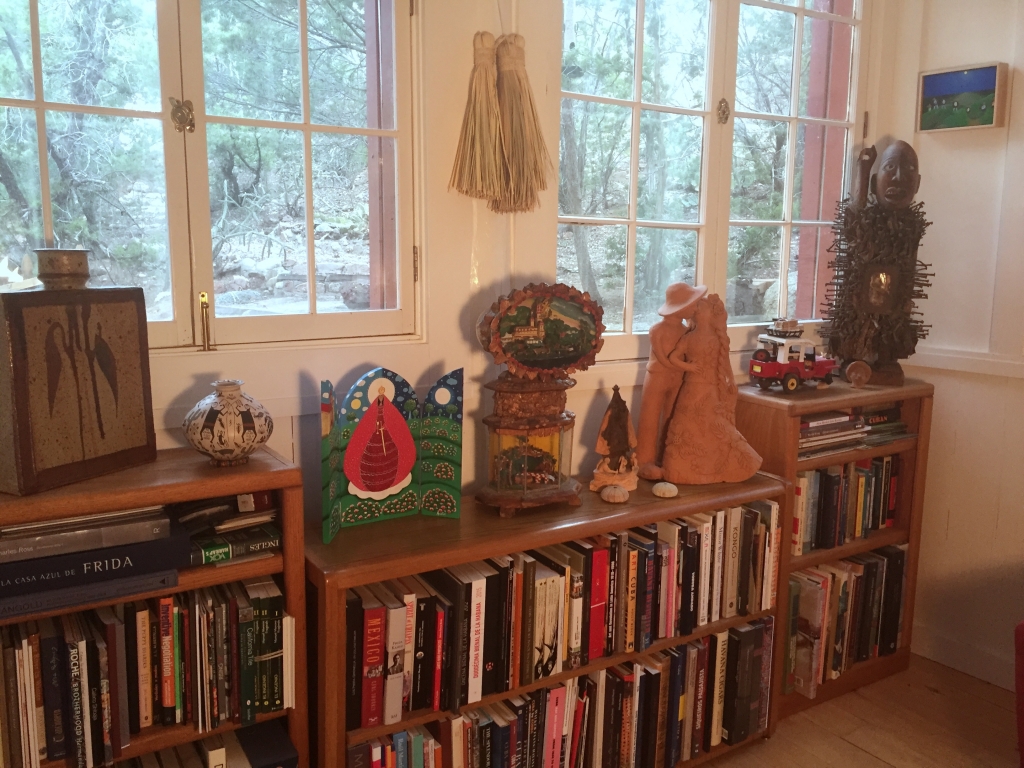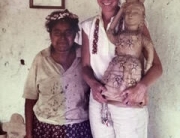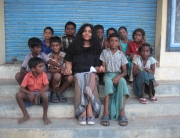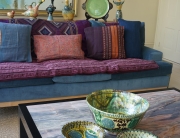
Over 40 years ago, I set off for a two year MFA program in ceramics in San Miguel de Allende, Mexico. I had never been to Mexico and I didn’t speak Spanish. Those two years would be transformational and inform who I am today. I had begun working in clay in California in the mid-’70s when functional pottery was all but taboo. A simple coffee mug or dinner plate could never show your inner angst. Moving to Mexico opened a world in which everyone, no matter how humble the home, used handmade dishes. Pottery was an integral part of society, one whose traditions had been kept alive for centuries. With that tradition came a sense of timelessness, of continuity and of humanity.
I ultimately became Teaching Assistant for the ceramics department. We dug our own clay and fired in a variety of kilns: high fire gas; raku; and pit-fired using wood and cow dung. In addition to clay classes, I learned how to weave rugs on ancient pedal looms, make baskets by the lake with local artisans, speak Spanish, and travel to the artisan rich areas of Michoacán, Oaxaca, Chiapas, and Guatemala. Thus began my love of folk art and the artists who make it.
Returning from Mexico, I arrived in Santa Fe in the spring of 1981 and began working as a studio potter at the Santa Fe Pottery on Guadalupe Street. I found a small house to rent on Hillside Avenue and to my delight, all of my folk art treasures fit right in and I could wear my blusas and huipiles everywhere. I was home.
Three years later I met Stuart who was a working artist at the time. Together we went on a five-week road trip down the coast of Mexico as far as Zihuatenejo and then inland to the Day of the Dead celebration in Patzcuaro, Michoacán. To be at this crafts market, during the Day of the Dead, with an empty pick up truck, was a dream come true. Needless to say, we filled the truck. When we got back to Santa Fe, not wanting to make the difficult decision of who got what, we decided to get a house together. A year later we were married.
Today, our “collection” is decidedly eclectic and overflowing. It represents our numerous visits to Mexico, trips to Europe and South America, treasures from years of shopping at the Folk Art Market, and, most recently, Cuba. Although our tastes sometimes differ – Stuart is more of a cutting edge kind of guy and I’m drawn to quieter things – it all works together. The common denominator is that in each piece, you can sense the hand of the artist and you can feel their presence.
In the photo seen here, moving from right to left, we see an oil painting by Cuban artist, Luis Rodriguez Arias, founder of El Grupo Bayate. Getting to know this soulful and humble man has been one of the greatest joys of my work with the Cuban artists who come to the Market. On his first visit in 2014, I saw him transformed from a shy, hesitant guajiro to a beaming, self-assured artist. He later told me that neither he nor his work had ever been treated with such dignity and respect.
Next is a Nkisi guardian figure from the Congo. We have several of these in our house which resonate with Stuart and his Cuban roots. At the foot of the Nkisi is a small clay portrait of a renowned clay artist, Don Jose Garcia Antonio. I was at his and Teresita’s home a few years ago and noticed a pile of broken and discarded pieces. All potters have such a pile somewhere in their studio or yard. We never throw anything away. I asked if I might take a little shard from the pile and there sat this sweet portrait of Don Jose in clay. He, too, is someone I have come to admire immensely for his talent, perseverance, and spirit. This little gem of a piece is my Talisman. The large clay piece of the couple nearby is by his daughter, Sara Garcia Martinez, who is helping to carry on this remarkable tradition.
The red jeep is the first of many pieces that we’ve purchased over the years from Leandro Gomez Quintero of Baracoa, Cuba, a small seaside town in the easternmost part of Cuba. A former history teacher, Leandro started making models of WWII jeeps and trucks as instructional aids for his students. He now depicts the everyday vehicles of Baracoa, using whatever he can find: foam core, wire, Styrofoam, poster board, and plastic. He has developed a loyal following in Santa Fe.
Also from Cuba are two pieces that depict the Patron Saint, La Virgen de la Caridad del Cobre. The small wooden carving shows the Virgen as she is most often depicted with the three fishermen who found her statue floating in the sea. It is made out of guayacán, one of the many precious kinds of wood found in eastern Cuba. Next to it is a diorama we bought in the town of Cobre which shows the Basilica, built-in 1927, and below it the copper (Cobre) mine. Every Cuban at some point in their life makes a pilgrimage to this site to pay their respects to La Virgen. It is the holiest of places on the island regardless of one’s religious beliefs. Ernest Hemingway donated his Nobel Prize in Literature to the Basilica on behalf of the Cuban people. We bought this in 2013, on our first trip to eastern Cuba, on our pilgrimage to Cobre.
Our lady in red, the triptych, represents the goddess, Santa Barbara. Her equivalent in the Afro-Cuban religion, Santeria, is Chango who is the owner of fire, lightning, thunder, music, drumming, and dancing. It is made by Havana artist, Armando Torres. This self-taught artist doesn’t identify himself as one from the arte naïf movement in Cuba but rather as more of a surrealist.
The small, delicate pot is from a young Hector Gallegos Jr. of Mata Ortiz, Mexico which we bought on a trip there in 1999. The son of two prominent potters, Hector was just beginning to find his own voice. And, finally, next to that is an example of the beautiful work of Eric Norstad, a functional potter from Northern California. It was Eric’s work that first inspired me to take a pottery class, which led to Mexico and to the world of folk art; a world rich with beauty, purpose, and the humble hand of the craftsman.
****
After receiving her MFA in ceramics in Mexico, Peggy moved to Santa Fe, NM where she worked as a potter for over 30 years. Her work was sold at La Mesa of Santa Fe, Simply Santa Fe, The Santa Fe Pottery, Goldwater’s Department Store, and Dean and DeLuca in New York City. In 2012, Peggy began leading cultural trips to Cuba for the International Folk Art Market as well as other organizations. To date, she has led over 35 trips to the island of Cuba. More recently, she has taken travelers to Mexico City and to the state of Oaxaca. It has been an exciting new adventure to share her love and knowledge of the people and cultures of these two amazing countries.Peggy is a former Board member of IFAM and has led the effort to bring Cuban artists and musicians to the Market for the past 10 years.





